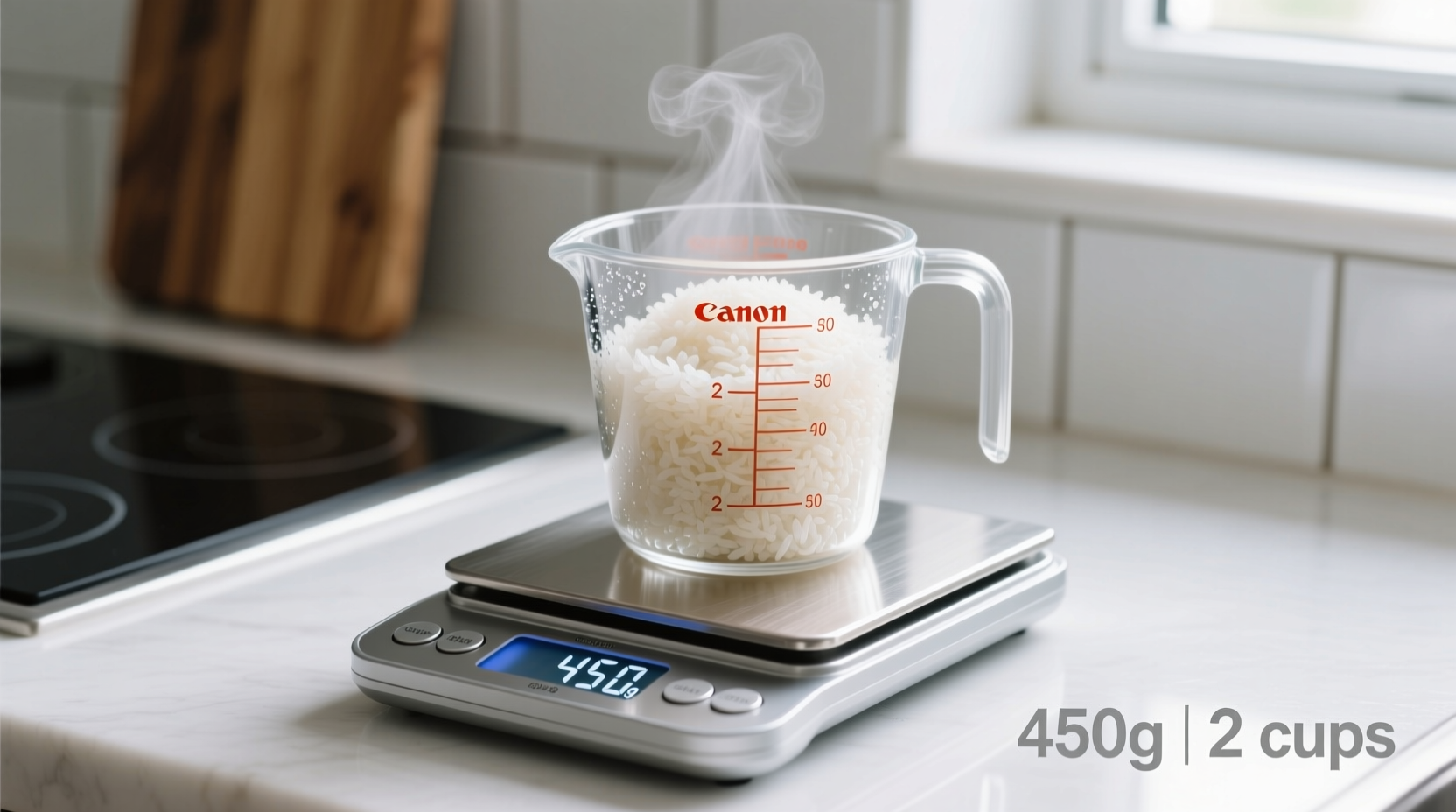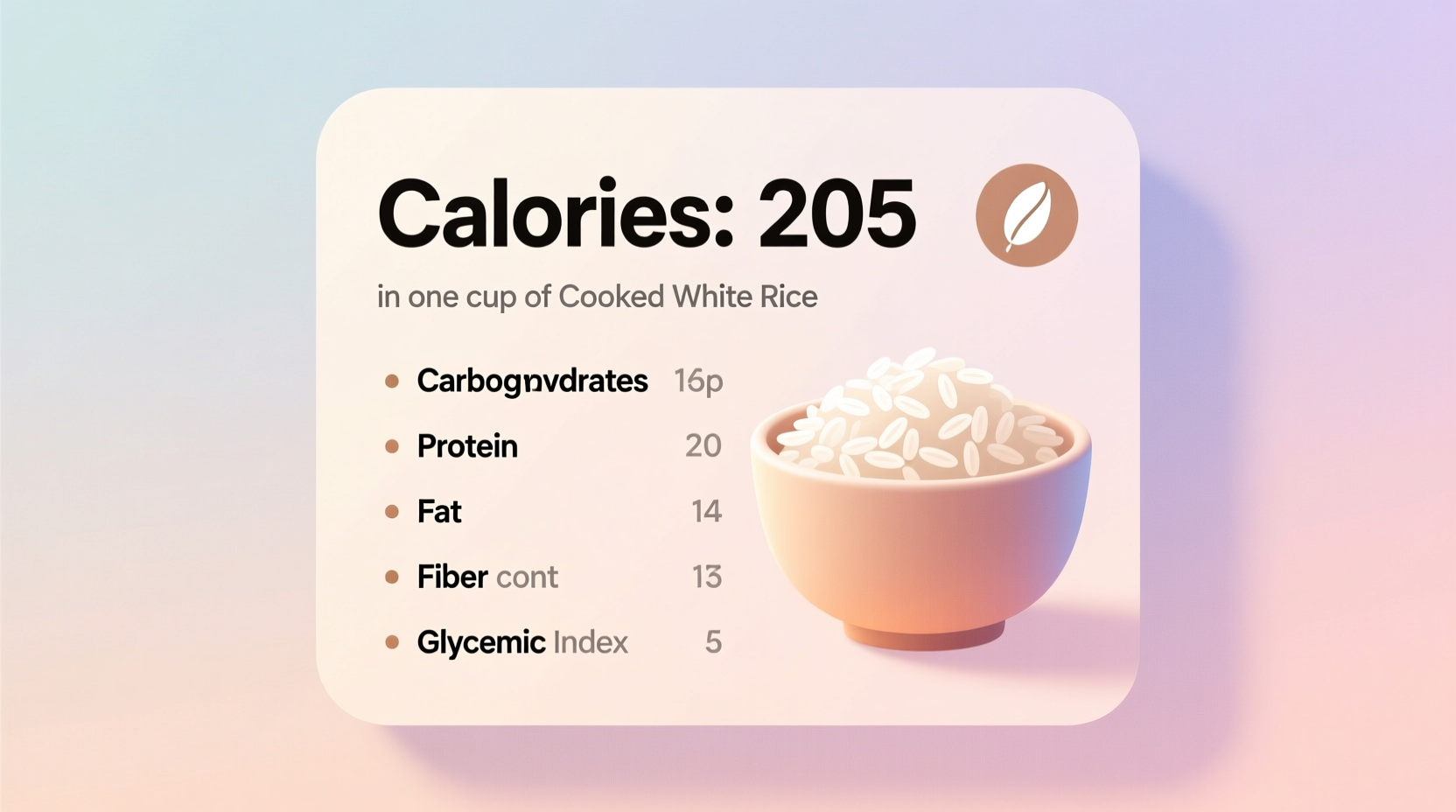Understanding the exact calorie content of staple foods like rice is essential for effective dietary management. Whether you're tracking macros, managing weight, or simply curious about nutrition, having accurate information helps you make informed food choices without unnecessary guesswork.
What Determines Calorie Content in Cooked White Rice
The calorie count in cooked white rice depends on several factors including rice variety, cooking method, and precise measurement. The standard reference value comes from the USDA FoodData Central, which reports that one cup (200g) of cooked long-grain white rice contains 205 calories. This measurement represents rice prepared with water only, without added fats or seasonings.
Rice absorbs water during cooking, which significantly changes its volume and calorie density compared to uncooked rice. One cup of uncooked white rice (about 185g) yields roughly three cups of cooked rice, containing approximately 670 calories total. This expansion explains why portion control matters when tracking rice consumption.
| Rice Type | Calories per Cup (200g) | Carbohydrates | Protein |
|---|---|---|---|
| White rice (long-grain) | 205 | 45g | 4.3g |
| Brown rice | 216 | 45g | 5g |
| Jasmine rice | 210 | 46g | 4g |
| Basmati rice | 210 | 45g | 4g |
This nutritional comparison shows that while white rice varieties have similar calorie counts, brown rice contains slightly more calories along with additional fiber and nutrients due to its intact bran layer.
Practical Portion Guidance for Daily Planning
When incorporating rice into your meals, understanding proper portions prevents unintentional calorie overconsumption. A standard serving size of cooked rice for dietary tracking is one cup (200g), but many restaurants and even home servings often exceed this amount.
For context, 205 calories represents about 10% of a standard 2,000-calorie daily diet. If you're following a carbohydrate-controlled eating plan, this single serving provides approximately 15% of recommended daily carbohydrate intake. The Dietary Guidelines for Americans suggest that carbohydrates should comprise 45-65% of total daily calories for most adults.

How Cooking Methods Affect Calorie Density
The way you prepare rice significantly impacts its nutritional profile. Boiling rice in excess water and draining it can reduce starch content by up to 25%, potentially lowering calories slightly. Conversely, cooking rice with added fats like butter or coconut oil increases the calorie count substantially—each teaspoon of added fat contributes approximately 40 additional calories.
Recent research published in the International Journal of Food Sciences and Nutrition indicates that cooling cooked rice after preparation increases resistant starch content, which may reduce the effective calorie absorption by 10-15% compared to freshly cooked, hot rice. This phenomenon occurs due to starch retrogradation during cooling.
White Rice in Balanced Meal Planning
Despite common misconceptions, white rice can be part of a healthy diet when consumed in appropriate portions. Pairing one cup of cooked white rice with lean protein sources and non-starchy vegetables creates a balanced meal that provides sustained energy without excessive calorie intake.
For those managing blood sugar levels, combining rice with acidic components like vinegar or lemon juice can lower the glycemic response by up to 20-30%, according to studies from the American Journal of Clinical Nutrition. This simple preparation technique makes rice more suitable for individuals monitoring glucose levels.
Common Questions About Rice Calories
Many people wonder how rice fits into various dietary approaches. Whether you're following a specific eating plan or simply trying to understand portion sizes, having accurate information helps you make choices aligned with your nutritional goals. The following frequently asked questions address common concerns about rice consumption and calorie management.











 浙公网安备
33010002000092号
浙公网安备
33010002000092号 浙B2-20120091-4
浙B2-20120091-4